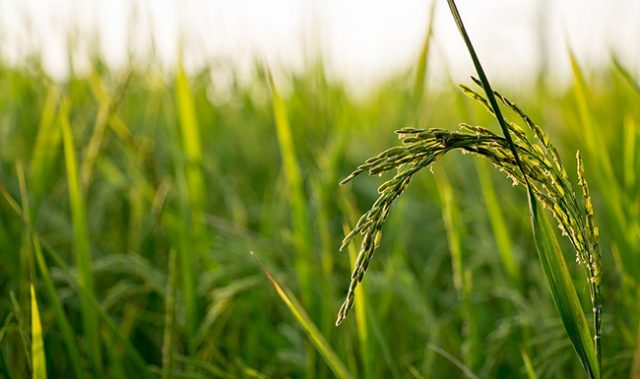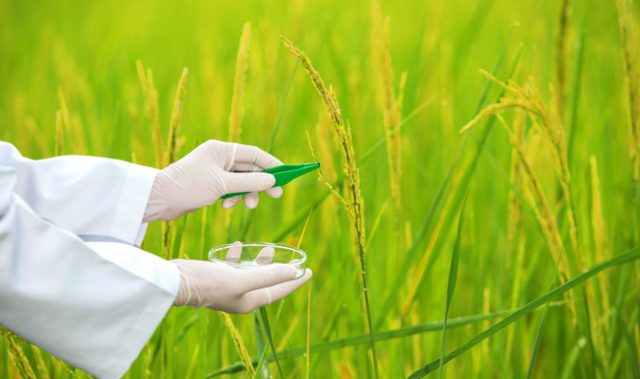
AsianScientist (Apr. 15, 2016) – Rice is a staple food for more than 3.5 billion people worldwide, and as such, meeting the demand for high-yielding rice is an urgent task for breeders. Now, researchers in China have found the regulator of a gene that limits rice plant growth, blocks pollination and reduces seed production. Their discovery was published in Plant Cell.
Superior, high-yielding hybrid plants are often produced by crossing two diverse parental lines. However, this task is quite complicated in rice, a self-pollinating plant. One approach to solving this problem originated in the 1970s, when Chinese scientists figured out how to produce male sterile (MS) rice lines. The use of MS lines allows breeders to perform controlled pollination, leading to successful hybrid rice production.
Unfortunately, in these MS lines, the panicle (flower head) often remains enclosed in the surrounding leaf sheath because the uppermost internode—the region of the stem that supports it—is short, leading to blocked pollination and reduced seed production.
To allow panicles to elongate and emerge from the leaf sheath, breeders use rice plants with a mutation in the gene ELONGATED UPPERMOST INTERNODE1 (EUI1), which encodes an enzyme that deactivates the plant hormone gibberellin (GA). This deactivation allows GA to stimulate the uppermost internode to extend, leading to panicle extension as well as increased plant height.
Understanding what regulates the enzyme EUI1 in normal, or wild type, plants is crucial.
According to Professor Chu Chengcai of the Chinese Academy of Sciences, “A further understanding of the molecular mechanism through which EUI1 activity is regulated during development will provide a more flexible way to fine-tune panicle extension, which may greatly help breeders improve hybrid rice seed production.”
By isolating and exhaustively analyzing a dwarf mutant with impaired panicle extension, Chu and colleagues uncovered a critical regulator of EUI1 gene expression in rice. This regulator, HOX12, binds directly to regulatory elements of the EUI1 gene, functioning as a transcription factor, or central regulator.
The scientists propose that HOX12 helps regulate plant growth in response to environmental cues through its effect on EUI1, which acts as a switch to regulate the migration of floral-derived GA from the panicle to the stem.
The next step will be to determine the upstream initiators of the HOX12-EUI1 regulatory cascade and the physiological conditions under which these modulations occur.
The article can be found at: Gao et al. (2016) Rice HOX12 Regulates Panicle Exsertion by Directly Modulating the Expression of ELONGATED UPPERMOST INTERNODE1.
———
Source: American Society of Plant Biologists; Photo: Shutterstock.
Disclaimer: This article does not necessarily reflect the views of AsianScientist or its staff.












